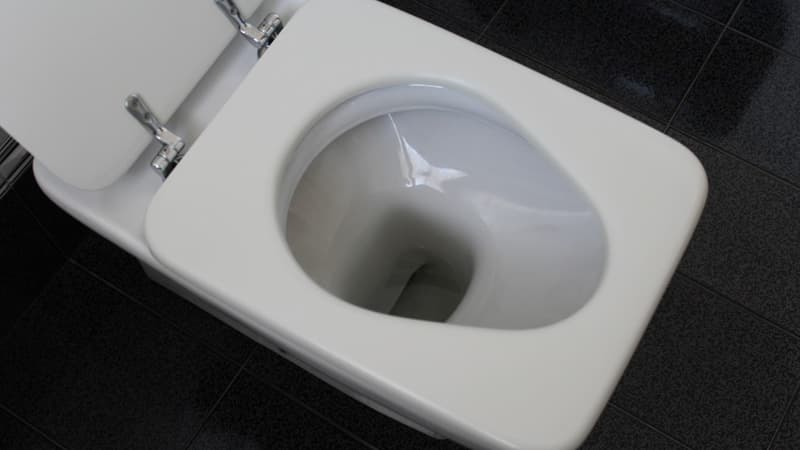It’s a study you’ll probably think about every time you go to the bathroom. A recent study by researchers at the University of Colorado, published in the scientific journal Nature and aired on The Conversation, it shows what happens when you flush without first putting the toilet seat down.
Every time you flush the toilet, you release tiny droplets of water, called aerosol plumes, into the surrounding air, which can spread pathogens.
A speed of 2 meters per second
In conducting their study, the University of Colorado scientists used high-powered lasers positioned in front of a container to illuminate the aerosol plumes, in order to obtain images and measure their positioning and movements.
“Although we expected to see these particles, we were surprised by the force of the jet that ejects the particles from the container,” John Criminaldi, lead author of the study, told The Conversation.
While scientists have long known that toilets release plumes of aerosol into the air, it’s their movements that this study sheds light on. The green light from the lasers reveals that they travel at a speed of 2 meters per second, rapidly transporting these particles up to 1.5 meters above the container.
Important vectors of human diseases
The droplets are first projected onto the ceiling and the wall behind the toilet. They then fall forward and into the rest of the room. If this study is interesting, it is because these particles are loaded with bacteria and viruses contained in the feces.
“Pathogen-containing aerosol particles are important vectors of human disease,” explains John Criminaldi.
According to the study, small particles that remain suspended in the air for a period of time can expose people to respiratory diseases such as influenza or Covid-19 through inhalation.
Larger particles that settle quickly on surfaces can spread intestinal illnesses like norovirus through hand and mouth contact.
close the lid well
Also, toilet water contaminated with these feces can have concentrations of pathogens that persist after dozens of flushes. So if the toilet is in the bathroom, the particles can end up on a towel or toothbrush.
While this study shows the projection and movement of the aerosol plume, it does not directly address how they can transmit disease and the associated risks.
In the meantime, the researchers recommend tightly closing the lid before discharging the water.
Source: BFM TV


